Running is an activity that requires proper equipment, and one of the most overlooked but crucial pieces of gear is the socks. The best running socks not only offer comfort but also provide support, prevent blisters, and enhance your overall performance. In this article, we’ll explore the key features of the best running socks, the materials that make them stand out, and how to choose the right pair for your needs. Whether you’re a marathoner or a casual runner, the right socks can make a world of difference in your performance.
Introduction: Why the Right Running Socks Matter
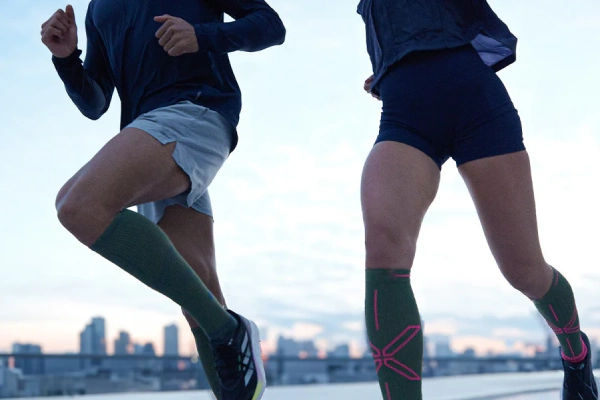
Running socks may seem like a small detail, but they’re a performance essential. The right pair manages moisture, reduces friction, and supports your stride mile after mile. A poor pair can mean blisters, chafing, and discomfort that cut your run short.
In 2025, advancements in yarns, knitting density, and compression technology have made running socks smarter and more specialized than ever. Whether you’re training for a marathon or running for fitness, choosing the right socks can transform your experience.
Top Running Socks of 2025
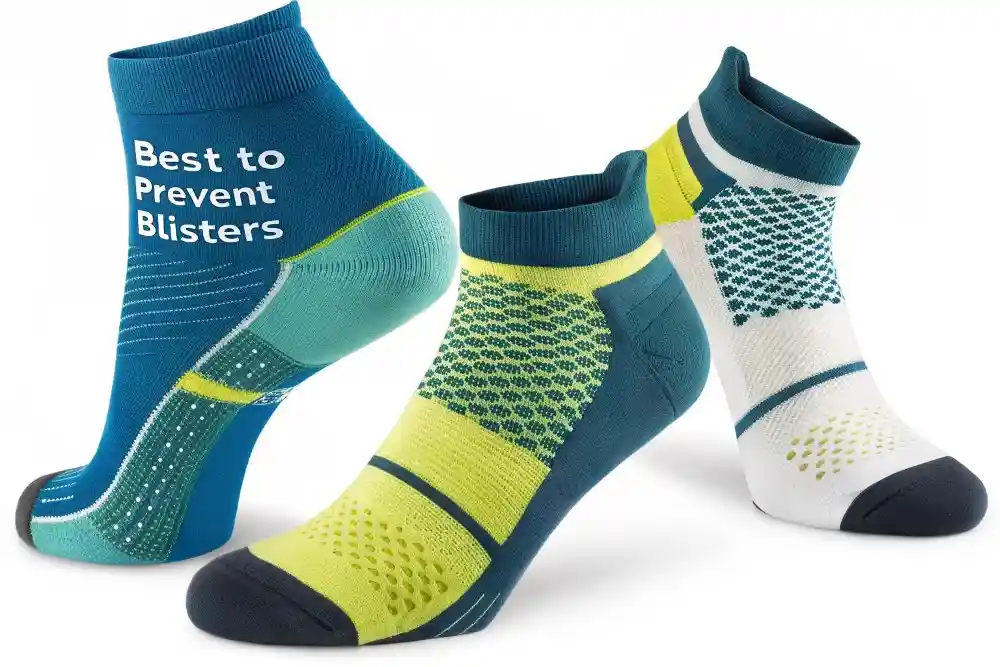
The market is full of options, but these five models consistently earn high marks for comfort, performance, and durability.
Balega Hidden Comfort
Best for: Everyday running
Soft, cushioned, and breathable — Balega’s flagship sock uses Drynamix fibers that wick moisture effectively. A seamless toe box and deep heel pocket keep the sock in place even during long runs.
Feetures Elite Light Cushion
Best for: Long-distance training
These socks feature targeted compression zones around the arch and ankle for superior fit and support. The synthetic blend dries quickly, and the light cushioning keeps your feet stable without bulk.
Smartwool Run Targeted Cushion
Best for: All-season comfort
Made from merino wool and recycled nylon, Smartwool’s design naturally regulates temperature and resists odor. Ideal for both warm and cold climates, it offers medium cushioning for extra protection on long runs.
CEP Compression Run Socks 4.0
Best for: Recovery and endurance
CEP is known for medical-grade compression (16–20 mmHg). These knee-high socks improve blood flow and reduce muscle fatigue — perfect for marathoners or runners managing recovery.
Saucony Inferno Wool Blend
Best for: Budget-friendly versatility
A lightweight synthetic-wool blend that offers solid wicking performance at an affordable price. Great for casual or short-distance runners looking for everyday reliability.
Key Features to Look for in Running Socks
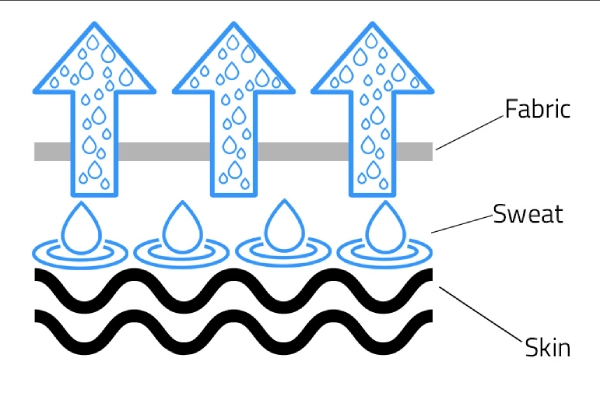
- Moisture Management
Synthetic blends (nylon, polyester) and merino wool pull sweat away from the skin to keep feet dry, reducing friction and blister risk. - Cushioning and Support
Targeted padding at the heel and forefoot absorbs impact, while arch compression keeps the sock from slipping. - Seamless Construction
Flat or hand-linked toe seams prevent irritation and hotspots during long runs. - Breathability
Mesh ventilation zones over the instep help regulate temperature and airflow, especially in warm climates. - Durability
High-abrasion nylon reinforcement in the heel and toe ensures longevity, even after hundreds of miles.
| Feature | Importance | Example Socks |
|---|---|---|
| Moisture-Wicking | Keeps feet dry and reduces blisters | Polyester, nylon socks |
| Cushioning | Reduces impact and fatigue | Cushioned ankle socks |
| Breathability | Prevents overheating | Merino wool, mesh socks |
Materials: What Works (and What to Avoid)
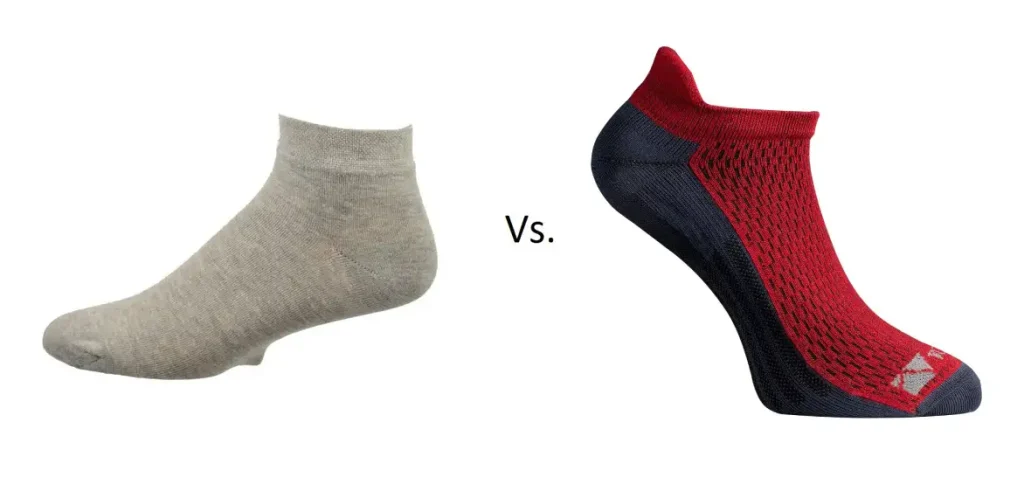
| Material | Benefits | Ideal For |
|---|---|---|
| Polyester/Nylon blends | Fast-drying, durable | Daily and long-distance running |
| Merino Wool | Temperature regulation, odor control | All-season runs |
| Spandex/Elastane | Stretch and shape retention | Performance fit |
| 100% Cotton (Avoid) | Holds moisture and increases friction | Casual wear only |
If you like the softness of cotton, look for technical blends that mimic cotton’s feel while maintaining sweat-wicking ability.
Sock Height: Finding the Right Fit
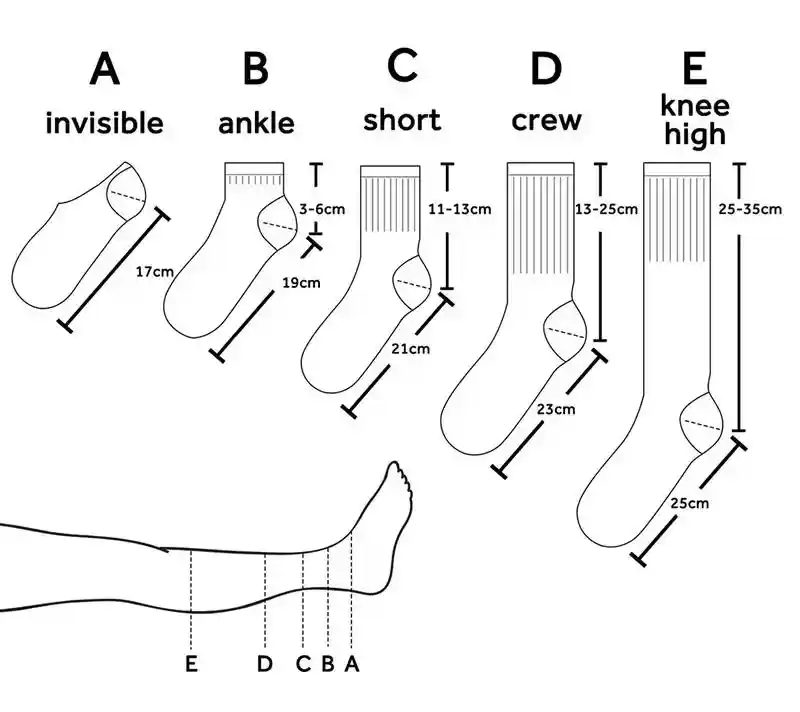
The height of your running socks plays a significant role in comfort and performance. The right sock height can enhance your running experience by providing additional support or comfort where it’s needed most.
Ankle-Length Socks
Ankle-length running socks are ideal for runners who want a lightweight feel and maximum freedom of movement. These socks are designed to cover just above the ankle, making them perfect for warm-weather runs or for runners who prefer minimal sock coverage. Ankle-length socks are also great for short-distance runners who don’t need extra cushioning or support.
Crew-Length Socks
Crew-length socks extend a bit higher up the calf, providing additional support and protection. These socks are particularly beneficial for runners who engage in long-distance running or trail running. The extra length helps protect the legs from chafing and provides a bit of compression, which can improve circulation and reduce fatigue during long runs.
Knee-High Compression Socks
Knee-high compression socks are designed to apply gentle pressure to the calves, promoting better blood circulation. These socks are often used by athletes during recovery to reduce muscle soreness and improve circulation. They are also popular among marathoners and long-distance runners who need extra support for their legs during extended runs.
| Sock Height | Features | Best For |
|---|---|---|
| Ankle-Length | Lightweight, minimal coverage | Short runs, hot weather |
| Crew-Length | Extra calf coverage, support | Long-distance, trail running |
| Knee-High | Compression, additional calf support | Recovery, marathon running |
Sizing and Fit Considerations
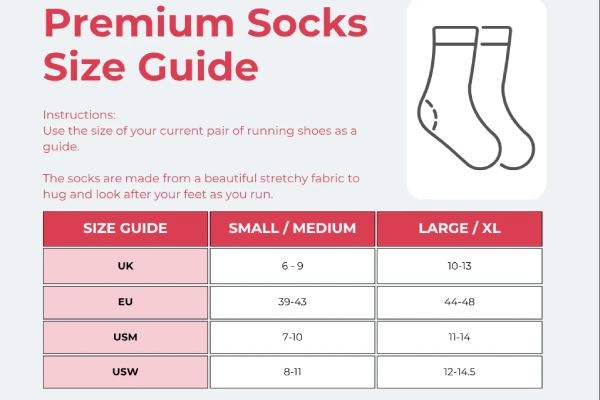
How to Measure for the Best Fit
To find the best fit, it’s essential to follow the manufacturer’s sizing guide. Most brands provide a sizing chart that matches foot measurements to sock sizes. The best socks should fit snugly without constricting your toes or arch. Ensure that there is no extra material that could rub against your skin and cause blisters.
Gender-Specific vs. Unisex Sizing
Some brands offer gender-specific socks, which are tailored to the differences in foot shape between men and women. Unisex socks typically fit a broader range of foot sizes. Depending on your foot shape, gender-specific socks may offer a more secure fit, while unisex socks are generally more versatile and can be shared among different runners.
Impact of a Good Fit on Comfort
The right fit ensures that your socks stay in place during your run, preventing irritation and discomfort. A proper fit also reduces the likelihood of socks slipping down, bunching up, or causing friction, all of which can disrupt your running performance.
| Fit Type | Characteristics | Best For |
|---|---|---|
| Unisex | Fits a wide range of foot sizes | Group purchases, versatility |
| Gender-Specific | Tailored to foot shape and width | Women’s or men’s specific needs |
| Snug Fit | Tight fit for better performance | Speed work, races |
Types of Running Socks for Different Running Styles
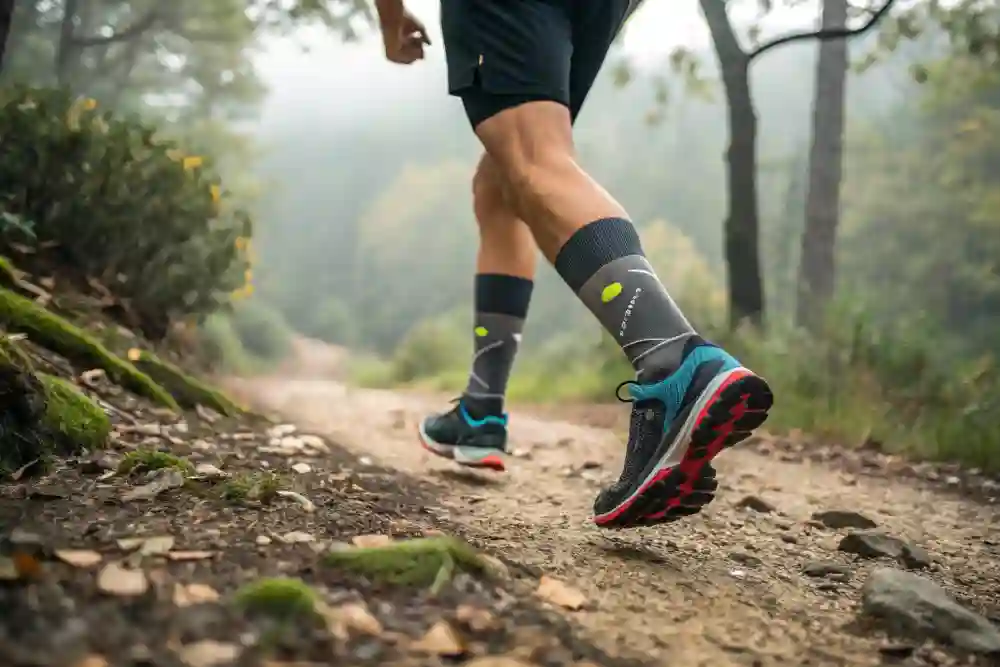
Running socks are not a one-size-fits-all product. Your running style greatly influences which socks are best for you. Whether you’re a marathon runner, a trail runner, or someone who enjoys short, easy runs, the socks you choose should match your needs.
Trail Running Socks
Trail running involves unpredictable terrain, often with mud, rocks, and uneven ground. Trail running socks are designed with extra durability and support for these harsh conditions. Many trail socks feature thicker cushioning, reinforced heels, and toes to prevent blisters and provide extra protection. Additionally, they are made with moisture-wicking fabrics to keep your feet dry in variable weather conditions, such as rain or snow.
Road Running Socks
For road runners, the ideal sock should be lightweight, breathable, and designed to endure long-distance wear. Road running socks are typically thinner than trail running socks, focusing on comfort and moisture management rather than extra cushioning. They are perfect for runners who are hitting the pavement for several miles and need socks that won’t slow them down with excess material.
Compression Running Socks
Compression socks are designed to improve blood circulation and provide support to the muscles during and after a run. These socks are ideal for long-distance runners or those recovering from intense workouts. The gentle compression helps reduce muscle fatigue and promote faster recovery by enhancing blood flow. Many elite runners use compression socks for their performance-enhancing benefits.
| Type | Key Features | Best For |
|---|---|---|
| Trail Running Socks | Reinforced cushioning, durability | Trail running, rough terrain |
| Road Running Socks | Lightweight, breathable | Long-distance, pavement running |
| Compression Socks | Muscle support, improved circulation | Marathon, recovery |
Weather-Based Recommendations
| Weather | Ideal Material | Features |
|---|---|---|
| Hot & Humid | Polyester blends, mesh vents | Lightweight, ultra-breathable |
| Cold & Wet | Merino wool blends | Thermal insulation, moisture control |
| Variable / All-Season | Merino + Synthetic | Adapts to temperature changes |
Common Running Sock Issues and Solutions
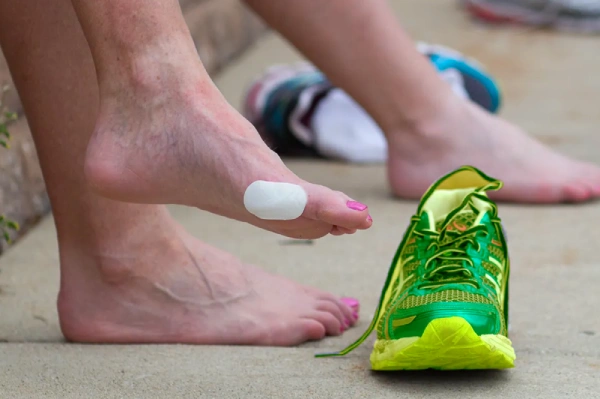
Even the best running socks can face some issues after frequent use. Identifying and addressing these issues early will help you get the most out of your socks and avoid discomfort or injuries.
Blisters and Hotspots
Blisters are a common problem for runners, often caused by friction between the skin and the sock. The best way to prevent blisters is by choosing the right fit and material. Running socks with moisture-wicking properties help reduce friction, keeping your feet dry and minimizing the chance of blisters. If you experience hotspots, try socks with additional padding or cushioned zones in key areas like the heel and toes.
Foot Odor and Bacteria Buildup
Foot odor is another issue that many runners face. To combat odor, choose socks with antimicrobial treatments or natural materials like merino wool that naturally resist bacteria. Additionally, ensure you wash your socks regularly to keep them fresh.
Loose or Sagging Socks
Socks that sag or slide down during a run can be both uncomfortable and distracting. Choose socks with a snug fit around the ankle or calf to prevent them from slipping down. Some brands offer compression running socks, which provide a more secure fit and prevent slipping while improving circulation.
The Impact of Running Socks on Performance and Injury Prevention
Choosing the right running socks goes beyond comfort and convenience. Running socks can significantly impact performance by reducing the risk of injuries and improving your overall running experience. Whether you’re a casual runner or an elite athlete, the socks you wear can either make or break your run.
Injury Prevention
Properly designed running socks can help prevent injuries like blisters, shin splints, and tendonitis. Socks that offer adequate cushioning and support reduce the pressure on your joints and muscles, helping prevent stress-related injuries. Compression socks, in particular, have been shown to improve circulation and reduce swelling, making them ideal for recovery after long runs.
Performance Enhancement
The right socks also help improve performance by providing better comfort and reducing foot fatigue. Running socks with padding and compression support can help stabilize your feet and reduce muscle fatigue, allowing you to run longer and faster without the discomfort that often comes with poor footwear.
| Benefit | Sock Type | Key Feature |
|---|---|---|
| Injury Prevention | Cushioned, compression socks | Arch support, cushioning |
| Performance Enhancement | Compression socks | Reduced muscle fatigue |
Customer Testimonials: What Runners Are Saying
Customer feedback plays a significant role in determining the quality of running socks. Reviews and testimonials provide real-life experiences from runners who rely on socks for comfort, performance, and injury prevention.
Positive Reviews
Many runners praise socks that provide cushioning and moisture-wicking properties, noting that these features help keep their feet dry and comfortable during long runs. Compression socks, in particular, receive high marks for improving circulation and reducing recovery time.
Negative Reviews
On the flip side, some runners report issues with durability, particularly with cheaper socks that wear out after several uses. While budget socks may provide short-term comfort, they often don’t stand up to the rigors of regular long-distance running, which is why it’s important to invest in high-quality, durable socks for the long haul.
FAQ
What are the best running socks made of?
The best running socks are made of moisture-wicking fabrics like nylon, polyester, or merino wool. These materials keep feet dry, prevent blisters, and stay durable through long-distance training. Learn more about materials here.
Are compression socks good for running?
Yes. Compression running socks improve blood flow and muscle stability, helping reduce fatigue and speed up recovery. Many runners wear them during marathons or post-run recovery sessions.
How should running socks fit?
Running socks should fit snugly without bunching or restricting. A proper fit prevents friction, keeps seams in place, and helps avoid blisters during long runs.
How often should I replace my running socks?
Replace your running socks every 300–500 miles, or when you notice thinning or loss of elasticity. Worn-out socks lose their cushioning and moisture control.
Can I get custom running socks with my logo?
Yes, you can. At Max Hosiery, we manufacture custom running socks with your logo, colors, and compression level. Perfect for brands, events, or retailers. Explore our custom service.
Conclusion
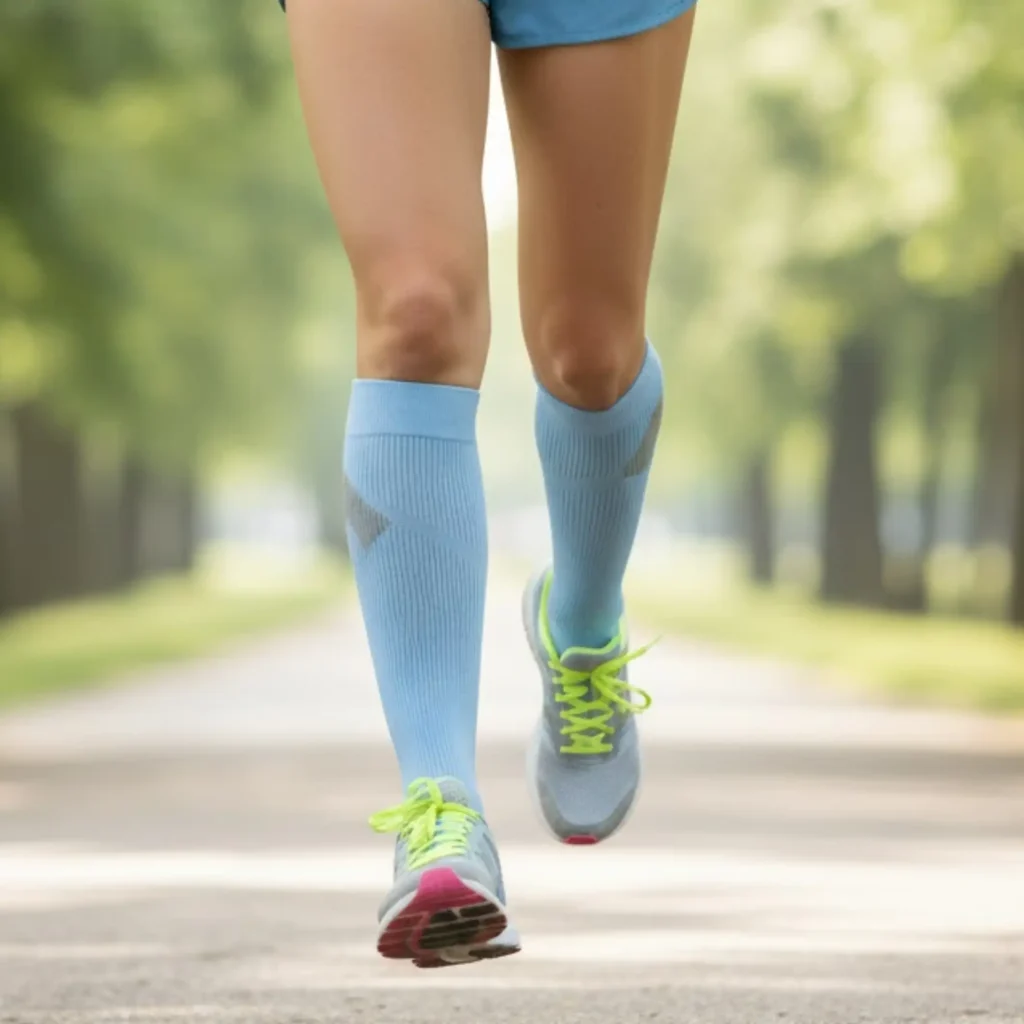
In summary, the best running socks blend comfort, durability, and performance technology to elevate every run. From marathon training to everyday jogs, the right socks help prevent blisters, improve circulation, and keep your feet dry mile after mile.
Investing in high-quality running socks isn’t just about comfort — it’s about long-term performance and protection. For retailers, sports brands, or event organizers, custom running socks can also strengthen your brand identity while delivering real athletic value.
Partner with Max Hosiery to create premium OEM & ODM running socks that combine technical innovation with your unique branding. Let’s build performance from the ground up.
